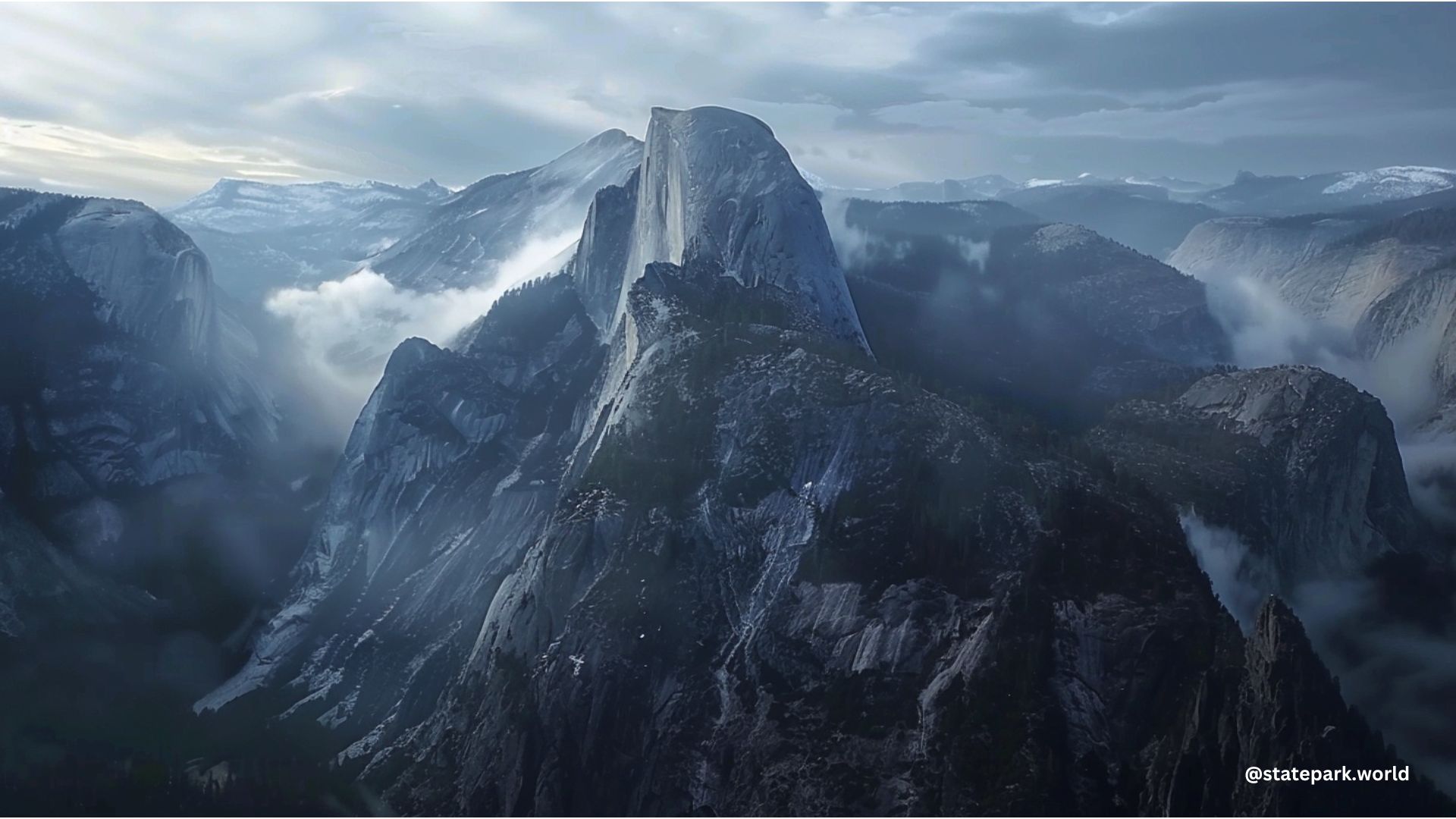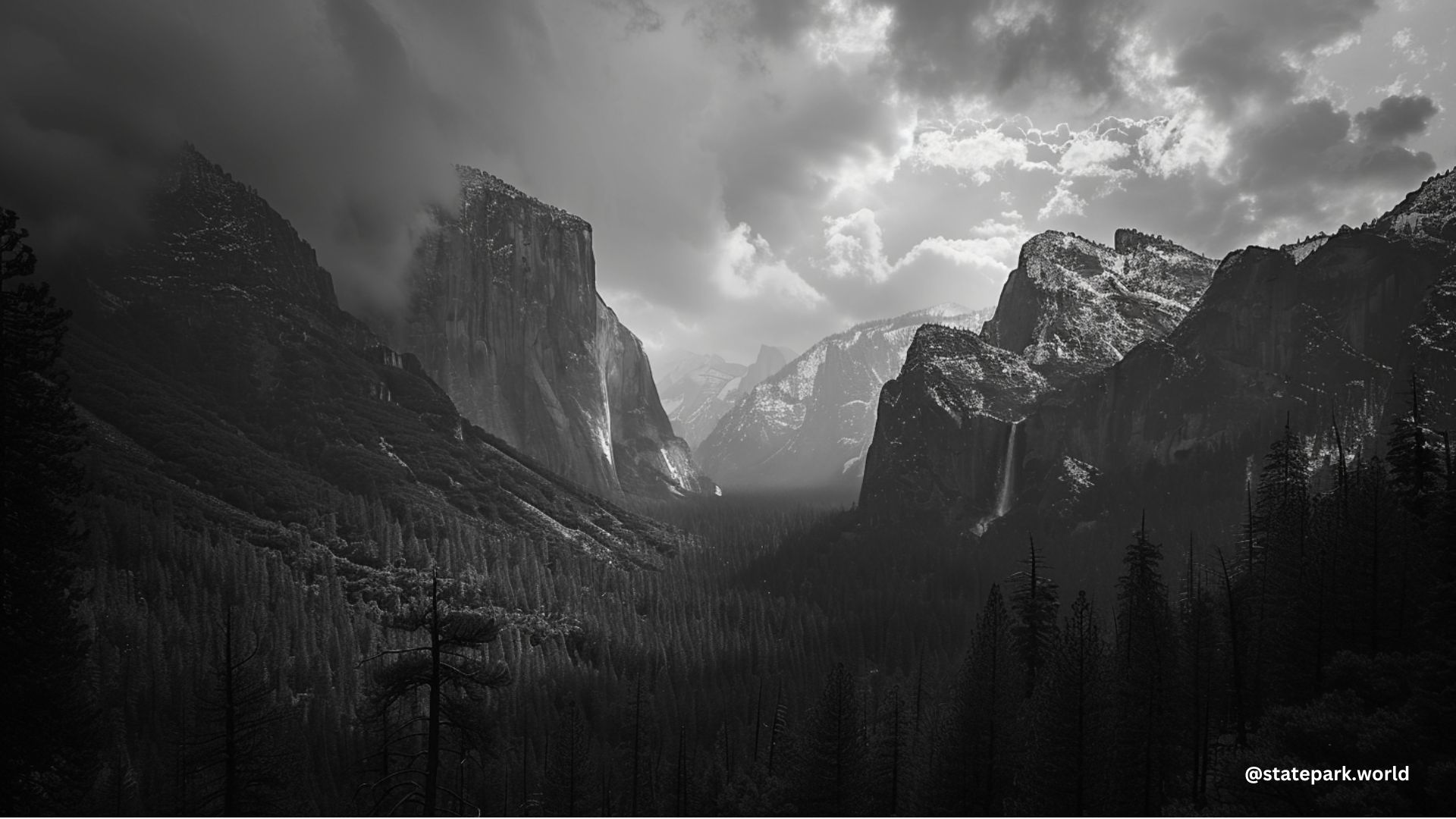The snow line in Yosemite National Park is currently around 9,000 feet, with patchy snow down to 7,000 feet. South-facing and open areas are more likely to be snow-free, while north-facing slopes and higher elevations above 8,000 feet may still have snow cover. Spring weather conditions can vary greatly, with hot days followed by cold nights, so hikers should be prepared for various conditions.
Current Snow Levels and Conditions
| Elevation | Snow Conditions |
|---|---|
| Above 9,000 feet | Continuous snow cover |
| 7,000 – 9,000 feet | Patchy snow cover |
| Below 7,000 feet | Mostly snow-free, with some patches |
South-facing and open areas are more likely to be snow-free, while north-facing slopes and higher elevations above 8,000 feet may still have snow cover. Hikers should be prepared for sudden changes in weather, with hot days followed by cold nights.
Water Levels and Creek Crossings

Water levels are plentiful due to snowmelt, but unbridged creek crossings can be dangerous. Hikers should plan their routes accordingly and consult with rangers for information on current conditions, especially when crossing creeks or rivers without bridges.
Tips for Safe Creek Crossings
- Check with rangers for the latest information on water levels and crossing conditions.
- Wear sturdy, water-resistant footwear and use trekking poles for stability.
- Unclip your backpack hip belt to allow for quick removal if you fall.
- Face upstream and sidestep across the creek, keeping your center of gravity low.
- If the water is too deep or swift, find an alternative route or wait for the water level to subside.
Permits and Regulations
Half Dome cables are up for the season, but a permit is required. Wilderness permits are also required for overnight stays in the Yosemite Wilderness and can be reserved up to five months in advance.
Permit Information
- Half Dome Permits: Required for hiking to the summit of Half Dome
- Wilderness Permits: Required for overnight stays in the Yosemite Wilderness
- Permit Reservations: Can be made up to 5 months in advance
- Permit Pickup Locations: Yosemite Valley Wilderness Center, Big Oak Flat Information Station, Wawona Visitor Center at Hill’s Studio, and Hetch Hetchy Entrance Station
Bear-Resistant Food Storage
Bear-resistant food canisters are required in the Yosemite Wilderness to store all food or scented items when left unattended. Hikers should maintain a safe distance from bears and use noise and stones to scare them away if necessary.
Yosemite Weather Conditions
Yosemite National Park weather conditions vary greatly due to its diverse altitude. Temperatures can range from 2,000 feet in the Valley to 13,000 feet at the peaks, resulting in a sixty-degree difference from place to place. Hikers should check the forecast daily when hiking or backpacking in the park and be aware of road and trail closures, webcams, and river flow information.
Temperature Variations
| Elevation | Temperature Range |
|---|---|
| 2,000 feet (Yosemite Valley) | 40°F – 80°F |
| 7,000 feet | 30°F – 60°F |
| 13,000 feet (Peaks) | 10°F – 40°F |
Hikers should be prepared for sudden changes in weather and check the forecast regularly to plan their activities accordingly.
Resources for Hiking Conditions
Yosemite National Park provides several resources to help hikers stay informed about current conditions:
- National Park Service Yosemite Conditions Page: https://www.nps.gov/yose/planyourvisit/conditions.htm
- Yosemite Conservancy Hiking Conditions Page: https://www.travelyosemite.com/plan/weather/
- Yosemite National Park Wilderness Conditions Page: https://www.nps.gov/yose/planyourvisit/wildcond.htm
By staying informed about the current Yosemite National Park hiking conditions, visitors can plan their adventures safely and enjoy the park’s stunning natural beauty.

